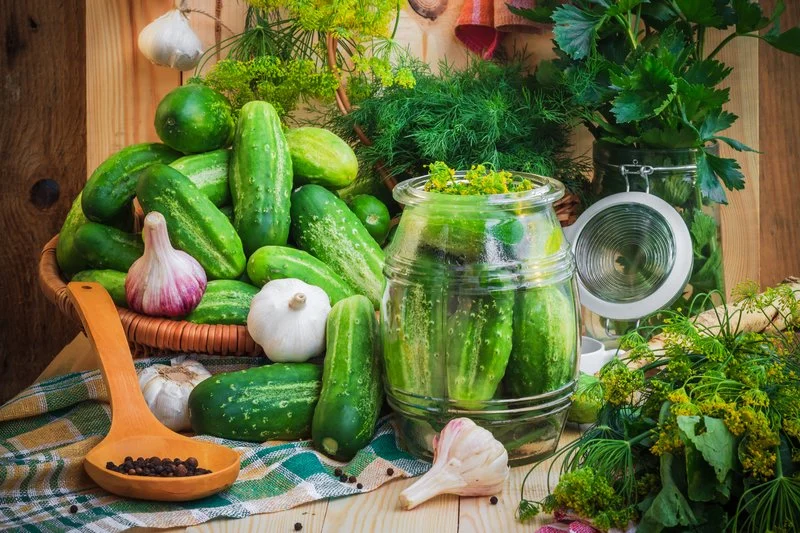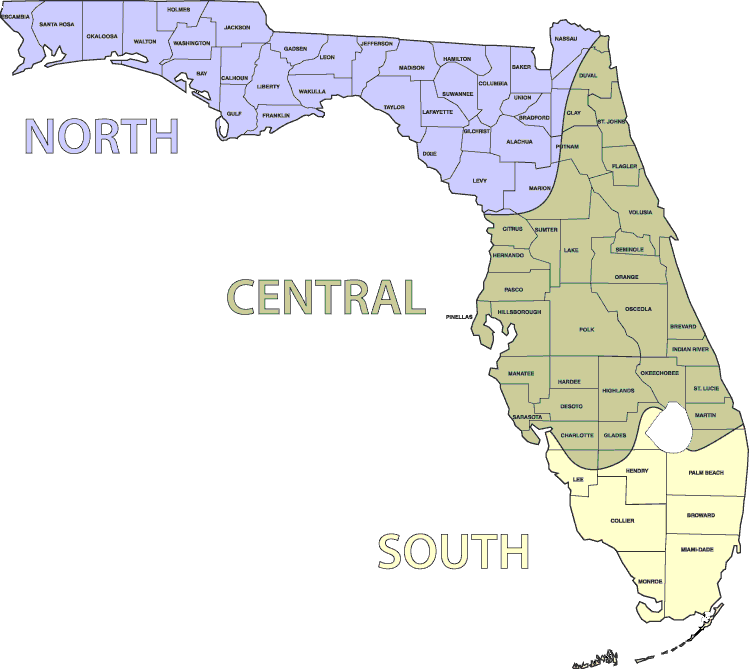Cucumber Varieties for Florida
Cucumbers, with their crisp, refreshing fruits and sprawling vines, bring a lively and productive touch to any garden. These plants are known for their rapid growth and abundant yield, producing long, slender fruits that are perfect for snacking, salads, and pickling. Their bright green fruits and lush foliage make cucumbers a delightful addition to garden beds, trellises, or containers.
In Florida planting zone 9, cucumbers thrive, especially during the warmer months. The vines spread out quickly, producing an array of flowers that eventually turn into the crisp, juicy cucumbers we all enjoy. Seeing these vibrant green fruits dangle from the vines is a rewarding sight, marking the success of your gardening efforts.
For those new to gardening, cucumbers are an ideal choice. They are relatively easy to grow and provide a bountiful harvest. Whether you prefer them fresh, pickled, or in a salad, cucumbers add a delicious and refreshing element to your meals, making your gardening endeavors both productive and enjoyable.
I would give cucumbers a 4 out of 5 on how easy they are to grow. They are relatively straightforward to cultivate, making them suitable for both beginners and experienced gardeners.
Affiliate Disclaimer:
Ocala Food Forest participates in affiliate programs that help support our educational and community projects. When you purchase through the links provided on our site, we may receive a small commission at no additional cost to you. This support allows us to keep the site free to access and continue researching what grows best in Central Florida’s Zone 9 climate. We only recommend products and resources we have personally tested and trust.
Slicing Cucumbers:
Marketmore 76
Heirloom

Description: Marketmore 76 is a popular slicing cucumber variety known for its dark green, straight fruits and excellent disease resistance. It has a crisp texture and mild flavor.
Growing Season: Spring, Summer, and Fall
USDA Planting Zone: 3-10
Special Notes: Resistant to powdery mildew and downy mildew. Ideal for fresh eating and salads.
Straight Eight
Heirloom

Description: Straight Eight is a classic slicing cucumber that produces uniform, straight fruits about 8 inches long. It has a crisp texture and mild flavor.
Growing Season: Spring, Summer, and Fall
USDA Planting Zone: 3-10
Special Notes: Heat-tolerant and highly productive. Great for slicing and fresh use.
Dasher II
Hybrid

Description: Dasher II is a hybrid slicing cucumber variety known for its high yield and disease resistance. It produces long, dark green fruits with a crisp texture.
Growing Season: Spring, Summer, and Fall
USDA Planting Zone: 3-10
Special Notes: Resistant to multiple diseases, including powdery mildew and cucumber mosaic virus. Excellent for fresh use.
Pickling Cucumbers:
Boston Pickling
Heirloom

Description: Boston Pickling is a traditional variety known for its small, blocky fruits ideal for pickling. It has a crisp texture and excellent flavor.
Growing Season: Spring, Summer, and Fall
USDA Planting Zone: 3-10
Special Notes: Fast-growing and highly productive. Perfect for making pickles.
National Pickling
Heirloom

Description: National Pickling is a popular pickling cucumber variety that produces medium-sized, dark green fruits with a bumpy texture. It has a crisp texture and mild flavor.
Growing Season: Spring, Summer, and Fall
USDA Planting Zone: 3-10
Special Notes: Resistant to scab and mosaic virus. Ideal for pickling and fresh eating.

Description: Homemade Pickles is a variety specifically bred for pickling, producing short, blocky fruits with a crisp texture and excellent flavor.
Growing Season: Spring, Summer, and Fall
USDA Planting Zone: 3–10
Special Notes: Disease-resistant and highly productive. Perfect for home canning and fresh use.
Specialty Cucumbers:

Description: Armenian cucumber produces long, ribbed, light green fruits with a mild, sweet flavor and crisp texture. Although it is technically a melon, it is used as a cucumber.
Growing Season: Spring, Summer, and Fall
USDA Planting Zone: 4–12
Special Notes: Heat-tolerant and highly productive. Ideal for fresh eating and salads.

Description: Lemon cucumber produces small, round, yellow fruits that resemble lemons. It has a mild, sweet flavor and crisp texture.
Growing Season: Spring, Summer, and Fall
USDA Planting Zone: 4–10
Special Notes: Unique appearance and excellent flavor. Great for fresh eating and pickling.
Persian Cucumber
Heirloom

Description: Persian cucumbers are small, thin-skinned, and seedless. They have a mild, sweet flavor and crisp texture.
Growing Season: Spring, Summer, and Fall
USDA Planting Zone: 4-10
Special Notes: Ideal for fresh eating, salads, and pickling. Often referred to as "mini cucumbers" or "baby cucumbers."
Florida Vegetable Planting Guide
This guide provides information on when to start seeds inside, direct seed, and transplant starter plants in the different regions of Florida.
North USDA Planting Zones: 8b-9a
Central USDA Planting Zones: 9b & some of 10a
South USDA Planting Zones: 10a-11b
Visit the U.S. National Arboretum for an Exact USDA Planting Zone Map.

| Cucumber | North Florida | Central Florida | South Florida |
|---|---|---|---|
| Start Seeds Inside | Jan-Mar/July-Sep | Jan-Feb/Aug-Sep | Sep-Feb |
| Direct Seed | Feb-Apr/July-Aug | Jan-Mar/Sep | Sep-Feb |
| Transplant Starter Plants | Feb-Apr/July-Aug | Jan-Mar/Sep | Sep-Feb |
Explanation:
Start Seeds Inside: Starting cucumber seeds indoors allows for an earlier start to the growing season, ensuring strong seedlings that can be transplanted once the soil warms up.
Direct Seed: Direct seeding cucumbers when the soil has warmed ensures quick germination and reduces the risk of transplant shock.
Transplant Starter Plants: Transplanting cucumber starter plants provides a head start on the growing season and helps to avoid the risk of cool soil temperatures that can inhibit germination.
Two types: slicers and picklers. Pickling types can also be used fresh. Burpless varieties exist. Many hybrids are gynoecious (female flowering; only female flowers set fruit). Bees are required for pollination.
Soil: Cucumbers prefer well-drained, fertile soil with a pH between 6.0 and 6.8. Amend the soil with compost or well-rotted manure to improve fertility and structure.
Sun: Full sun is essential for optimal growth and fruit production. Ensure cucumbers receive at least 6-8 hours of sunlight daily.
Watering: Keep the soil consistently moist but not waterlogged. Mulching helps retain soil moisture and regulate temperature.
Spacing: Plant cucumber seeds 1 inch deep, spacing them 6-12 inches apart in rows & spaced rows 3-4 feet apart. Provide trellises or supports for vining varieties.
Fertilization:
N-P-K Ratio: Cucumbers benefit from a balanced fertilizer with a slightly higher nitrogen content to support both leafy growth and fruit development, such as 20-10-10 or 15-10-10.When to Add:
Before Planting: Apply the balanced fertilizer to the soil before planting seeds or transplants to promote strong initial growth.
Mid-Growing Season: Reapply the fertilizer every 4-6 weeks during the growing season to support continued growth and fruit production.
Application Tips:
Follow the directions on the fertilizer package to avoid over-fertilization.
Apply the fertilizer evenly around the base of the plants and water thoroughly to help the nutrients reach the roots.
Additional Tips:
Cucumbers grow best in well-drained soil rich in organic matter, so consider adding compost to improve soil fertility and structure.
Mulch around the plants to help retain moisture, suppress weeds, and regulate soil temperature.
Ensure that cucumbers receive consistent moisture, especially during flowering and fruiting, to prevent stress and promote even growth.
Blog post on Natural Fertilizers
Support: Trellising vining cucumber varieties can save space and improve air circulation, reducing the risk of disease.
Harvest: Cucumbers are ready to harvest when they are firm, & green, except the lemon cucumbers, typically 40-65 days after planting. Pick them by cutting the stem with a sharp knife or scissors to avoid damaging the vine.
By selecting the right cucumber varieties and following these growing tips, you can achieve a successful and bountiful cucumber harvest in your Florida garden.
Pests and Diseases that affect Cucumbers in Florida:
Aphids: Small insects that suck sap from the leaves and stems, causing curling and yellowing.
Cucumber Beetles: Beetles that chew on the leaves, stems, and flowers and can transmit bacterial wilt.
Spider Mites: Tiny mites that cause stippling and yellowing of the leaves.
Natural Pest Control
Powdery Mildew: A fungal disease that causes a white, powdery coating on the leaves.
Downy Mildew: A fungal disease that causes yellowing leaves with a fuzzy, grayish growth on the underside.
Root-Knot Nematodes: Microscopic worms that cause galls on the roots, stunting plant growth.
Companion Plants
Description: Marigolds are bright, sunny flowers that come in a variety of colors including yellow, orange, and red.
Growing Season: Spring through fall
USDA Planting Zone: 2-11
Special Notes: Marigolds release chemicals in the soil that deter nematodes and other soil-borne pests.
How it Helps: Marigolds help repel nematodes, aphids, and cucumber beetles. Their roots release a substance that helps prevent root-knot nematodes, protecting cucumber roots.
Description: Nasturtiums are flowering plants with round leaves and vibrant flowers in shades of yellow, orange, and red.
Growing Season: Spring to fall
USDA Planting Zone: 4-8
Special Notes: Known for their ability to trap pests and attract beneficial insects.
How it Helps: Nasturtiums act as a trap crop, luring aphids and cucumber beetles away from cucumbers. Their flowers also attract beneficial insects that prey on these pests.
Description: Radishes are root vegetables with a spicy flavor, known for their rapid growth and crunchy texture.
Growing Season: Fall and spring
USDA Planting Zone: 2-10
Special Notes: Radishes can be used as trap crops to attract pests away from more valuable plants.
How it Helps: Radishes attract flea beetles and aphids, reducing the number of pests that attack cucumbers. This helps to protect the cucumbers from pest damage.
Description: Dill is an herb with feathery green leaves and yellow flowers, known for its use in pickling.
Growing Season: Spring to early summer
USDA Planting Zone: 2-11
Special Notes: Dill prefers full sun and well-drained soil.
How it Helps: Dill attracts beneficial insects such as ladybugs and predatory wasps that prey on aphids, cucumber beetles, and spider mites. It also helps improve the health of surrounding plants by enhancing their growth.
Description: Garlic is a bulbous plant that grows underground, with long green shoots above ground.
Growing Season: Fall to early summer
USDA Planting Zone: 3-8
Special Notes: Known for its strong scent and taste, garlic also has natural pest-repelling properties.
How it Helps: Garlic helps to repel aphids, spider mites, and other pests due to its strong odor. It also has antifungal properties that can help reduce the incidence of powdery mildew and downy mildew on cucumbers.
These companion plants help protect cucumbers from pests and diseases while also enhancing the overall health and productivity of the garden.
For cucumbers, here are the vegetable plants that should not be planted nearby:
